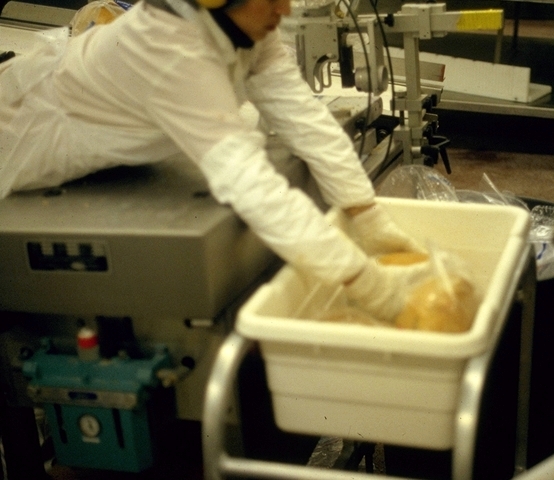 |
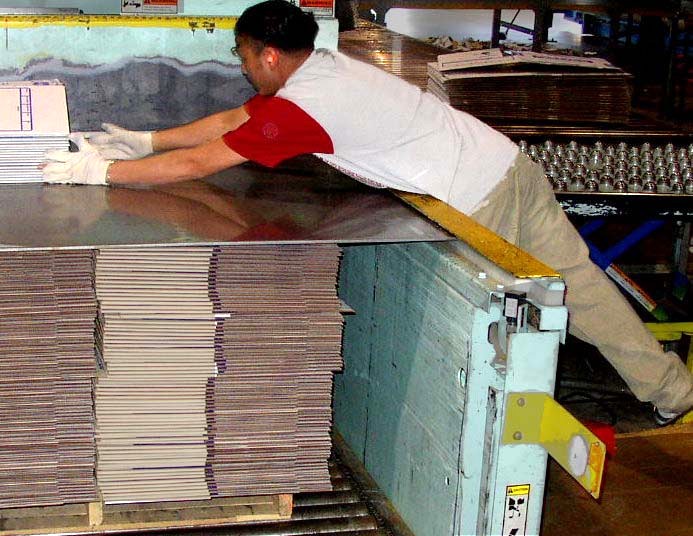 |
An essential aspect of task design is keeping products, parts, and tools that are frequently needed within easy reach. Focusing on reach provides value in several ways.
Production issues
There are occasions when at least some people cannot reach an item at all, so that time is wasted needlessly by getting help or a stepstool. When repetitive reaching is built into a task, it can dramatically increase cycle time. Finally, long reaches are usually related to poor layout, obstructions, and overly large work surfaces, which consume valuable floor space and add to congestion. Typically, these problems are not recognized by casual observation and only come to light when you conduct focused evaluations to identify long reaches.
Employee well-being
Long reaches are often the underlying reason why people are found working in awkward, contorted postures. Additionally, a long reach combined with a load multiplies the amount the strain on the shoulders and lower back.
Strategies for improvement
Reach envelope
Design for the short person
Rearrange
Improve layout
Reduce work surface size
Apply ‘lean’ concepts
Use swing arms
Tilt
Remove barriers
Reaching tools
Additional
Think “reach envelope”
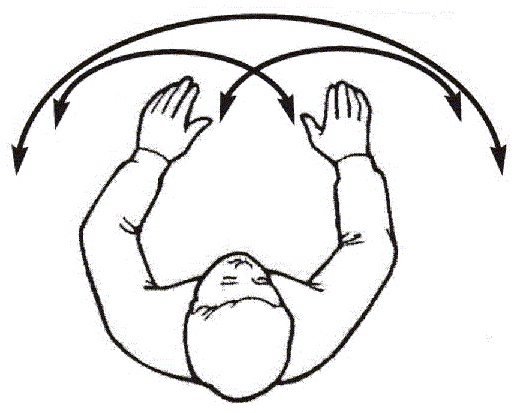 |
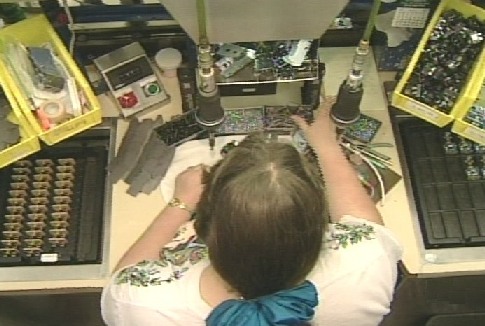 |
| Reach envelope: Semi-circle of easy reach | |
The basic idea is to (a) keep frequently used materials within the reach envelope of the full arm, and (b) keep constantly used things within the reach envelopes of the forearms. Note that this envelope is a semi-circle, not the rectangle typically used for workbenches.
Design for the short person
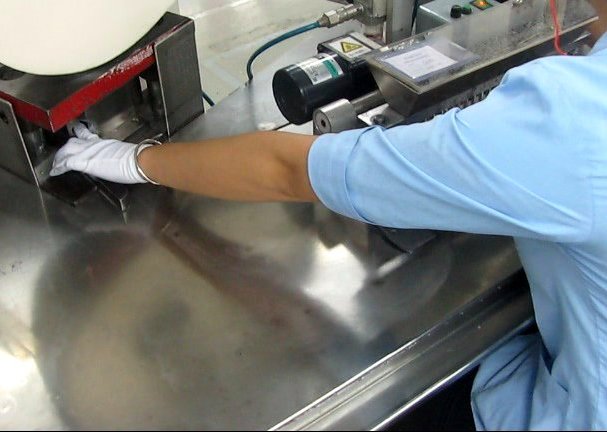 |
| Unnecessarily far |
In general, the criterion is to make sure that shorter-statured people can reach everything. If they can reach an object, so can everyone else. (There is an equivalent rule later regarding tall people and clearance.)
Rearrange
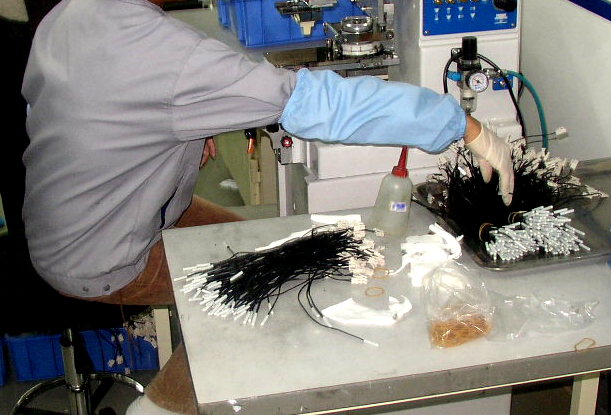 |
| Move the materials closer |
Keeping things in easy reach is not a hard concept to grasp. What is difficult is overcoming habituation. Typically, long reaches are so routine that you are unaware of the reach, whether you are the person doing the reaching or an observer, such as a supervisor.
In the above photo, the solutions are on two levels: (1) the employee could easily move the materials closer, and (2) the table could be redesigned or replaced.
Improve layout

Poor layout
Poor layout is a frequent cause of reaching and wasted effort. Often layout problems of this type can be remedied easily once recognized. See Workstations: layout.
Reduce work surface size
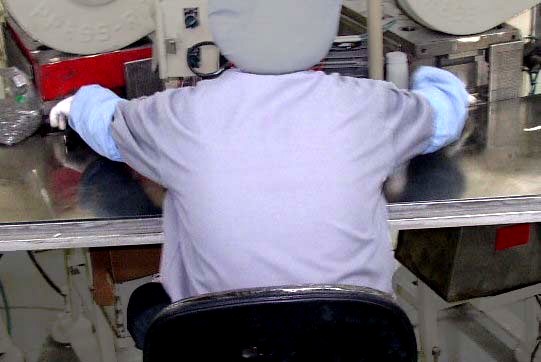 |
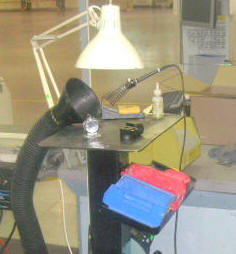 |
| Work surface much too large | Small surface — Often, all it takes |
All too often, work surfaces are much bigger than needed. Usually, all the space necessary is a dimension less than your forearm.
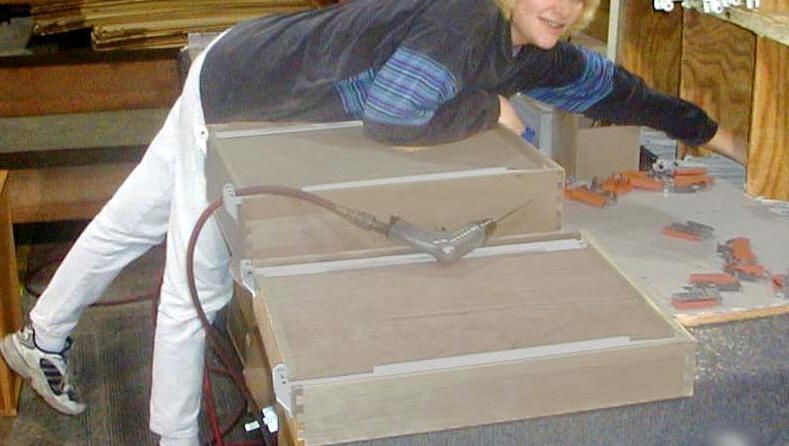 |
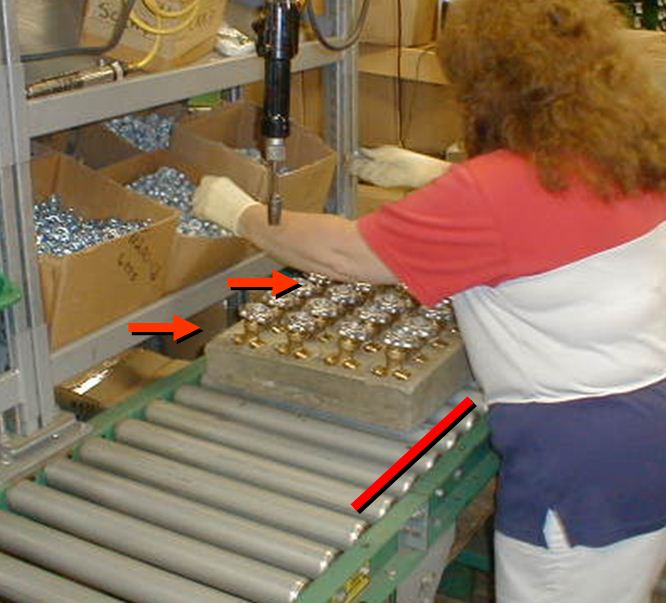 |
| Reduce table size (or move parts bins closer) | Use narrower conveyor or extend shelves |
There are dozens of options for cutting the size of surfaces. In the example above left, the area between the products and the parts bins is not being used, so the table could be cut (or the parts moved closer, or put on swing arms, or on a separate base, etc.). In the right hand photo, the conveyor is wider than the product, which increases the reach. A narrower conveyor could be used, or alternatively, the rack for the parts extended closer to the employee.
Increased floor space is an added benefit when the size of work surfaces is cut down and reaches are reduced. See Surface dimensions, Free-standing fixtures
Apply “Lean” concepts
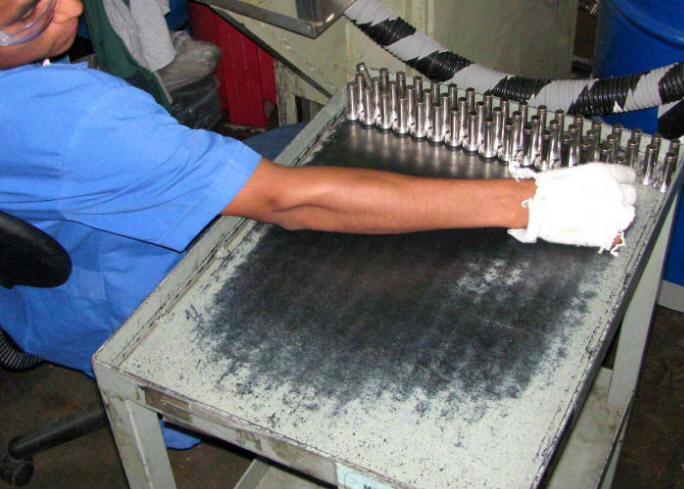

Smaller lot sizes would help reduce reaches (and save floor space)
Many of the standard concepts of Lean Manufacturing (or Flow Manufacturing) tend to reduce long reaches. For example, less Work-in-Process (WIP) often makes it possible to use narrower conveyors and smaller containers and surfaces, which in turn reduce reaches. The same is generally true for smaller lot sizes and fewer buffers.
Use swing arms
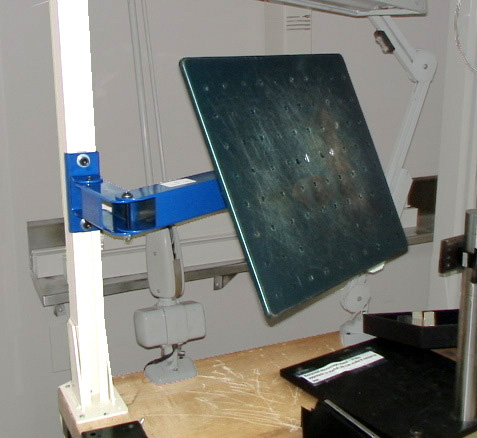
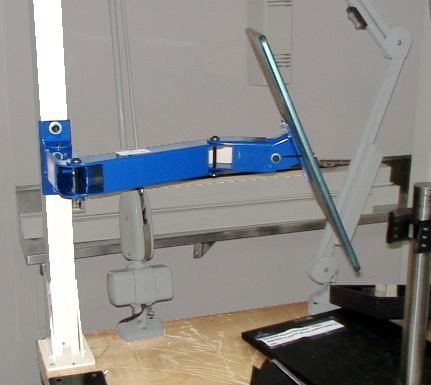
Articulated “swing” arm for tool holder
Another way to bring items closer is to use articulated arms. The arms can be pulled in or pushed away as needed. Furthermore, the arms keep the work surface available for active use. SeeWorkstation storage
Tilt
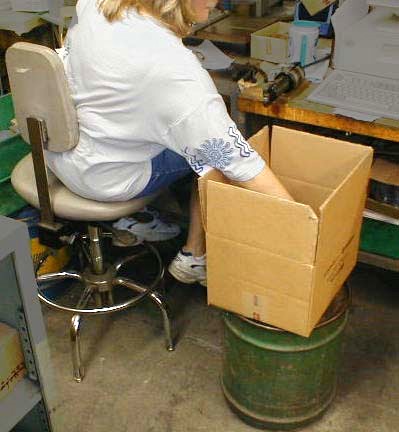 |
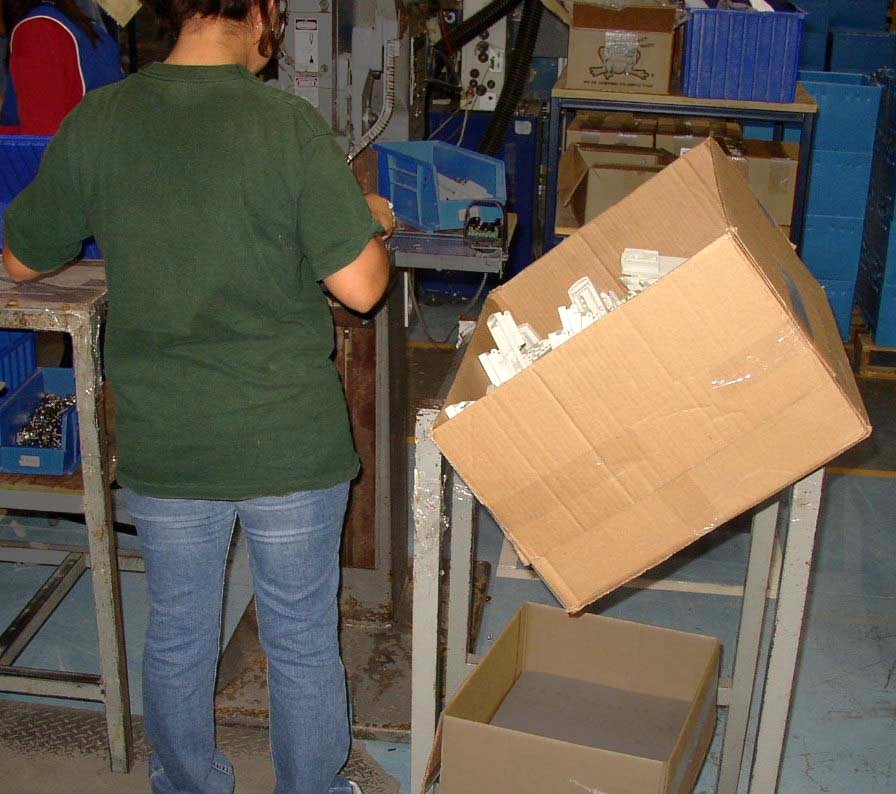 |
| Before: upright (on makeshift drum) | After: Tilted and raised |
Tilting a box makes reaching much better. Options include using tilt tables or stands, or even just propping up the box on one end. In addition, tilted box stands can easily be fitted with hinges, cylinders, and rollers to enable easy transfer to carts and conveyors. See Containers, Totes, Slanted surfaces
Remove barriers
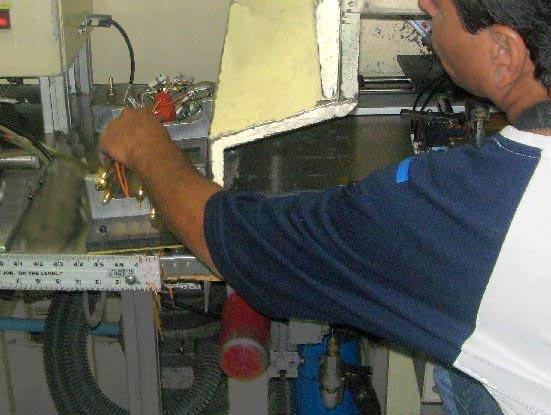 |
| Machine panel cover creates barrier |
Many reaches are caused by barriers that can be eliminated or relocated. In the above photo, the machine panel cover could be cut back (or the surface he’s reaching to could be extended forward). See Clearance.
Reaching tools
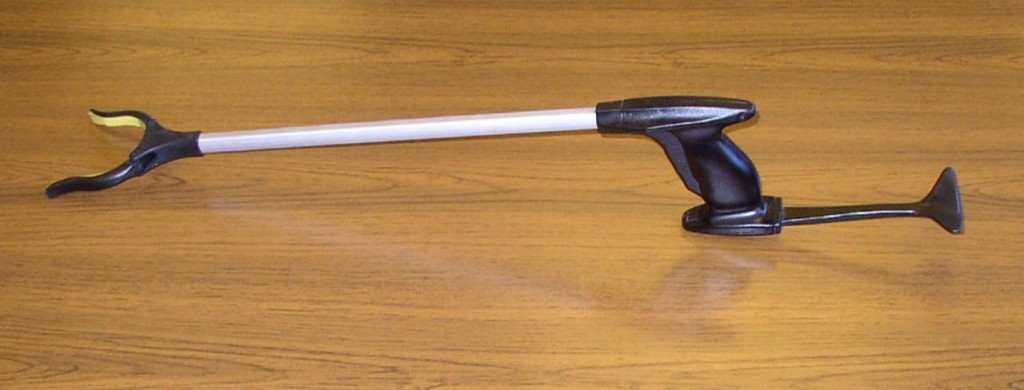
Reacher
Many types of reachers are commercially available and can be invaluable in certain situations. Simple homemade magnetic reaching tools can be used for steel items. Normally, reachers are an option of last resort, since they take extra time.
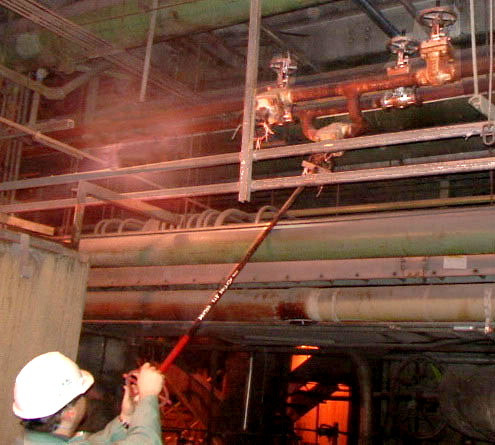 |
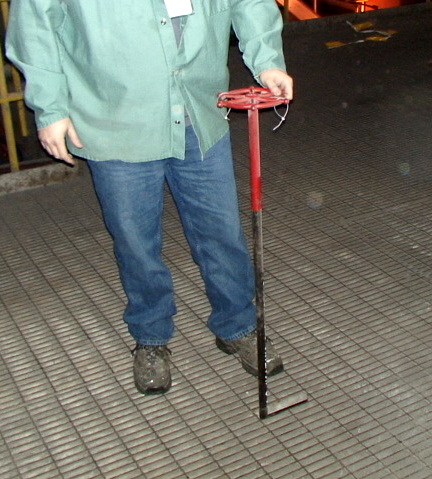 |
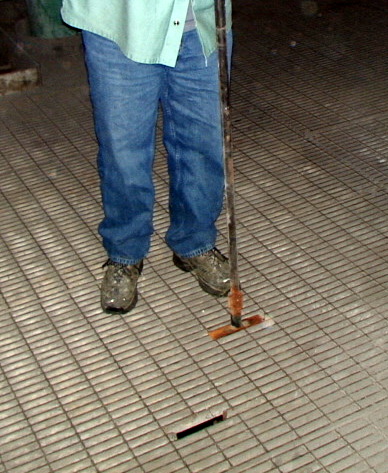 |
| Reach rod, overhead (note valve orientation to facilitate use of reach rod) | Reach rod inserted below platform (left), then removed (right) | |
Reach rods are commonly used in electrical power plants to turn valves that are difficult to access. The concept could perhaps be used in other types of operations.
Measurements and guidelines
Anthropometry provides data on human dimensions that can be used to determine maximum reaches for a given population.
